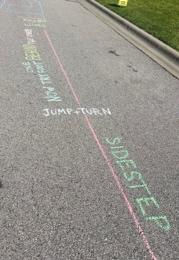Tactile Cues and Articulation Therapy
- All Care Therapies

- Oct 28, 2021
- 2 min read

In speech therapy there are many areas that may be targeted. These include everything from swallowing and cognition to language and articulation. Articulation therapy is when a therapist works with clients to guide them in learning to make sounds correctly. Common sounds targeted in articulation therapy include the ‘r’, ‘l’ and ‘s’ sound. There are many approaches to articulation therapy and each speech-language pathologist likes to do things a little differently. However, one way to help teach the correct placement of speech sounds is by using tactile, or “touch,” cues.
Tactile cueing is a way to show the correct placement of the articulators, (mainly the tongue, teeth and lips) using touch, to teach a person to say the correct pronunciation of sounds. This touch could be on the outside of the mouth using a finger, or on the inside of the mouth using a tongue depressor. The PROMPT programing (Prompts for Restructuring Oral Muscular Phonetic Targets) trains speech-language pathologists in the placement of tactile cues to help cue a client to properly say a sound.
PROMPT works by using these special tactile cues to guide the client’s articulators, and shape the correct movement of said articulators. This helps the client learn to plan and organize the movement of these sounds during speech.
PROMPT is commonly used with children and adults, who are older than 6 months, who have motor speech disorders. Motor speech disorders are disorders that disrupt the motor movement of articulators and make it difficult to produce correct speech sounds. These disorders can include apraxia, dysarthria, autism, cerebral palsy and more. PROMPT was originally developed for those with severe motor speech difficulties, however it has been shown to help improve articulation with mild and moderate articulation clients as well.
By adding these tactile cues clients can feel how their mouth and articulators should be moving when making certain sounds. Clients are able to imitate the tactile input with their articulators in a way that can not be provided as easily with visual (sight) or verbal (sound) cues.
References
1to1 Therapy Services. (2016, March 03). Prompt-a 'hands-on' approach to improving speech clarity. Retrieved February 07, 2021, from https://1to1therapy.ca/prompt/#:~:text=PROMPT%C2%A9%20stands%20for%20Prompts,correct%20movement%20of%20these%20articulators.
Dale, P. S., & Hayden, D. A. (2013). Treating speech subsystems in childhood apraxia of speech with tactual input: The prompt approach. American Journal of Speech-Language Pathology, 22(4), 644-661. doi:10.1044/1058-0360(2013/12-0055)
MS, E. (2020, November 23). What is the prompt method? Retrieved February 11, 2021, from https://therapyworks.com/blog/language-development/what-is-prompt-method/




Comments